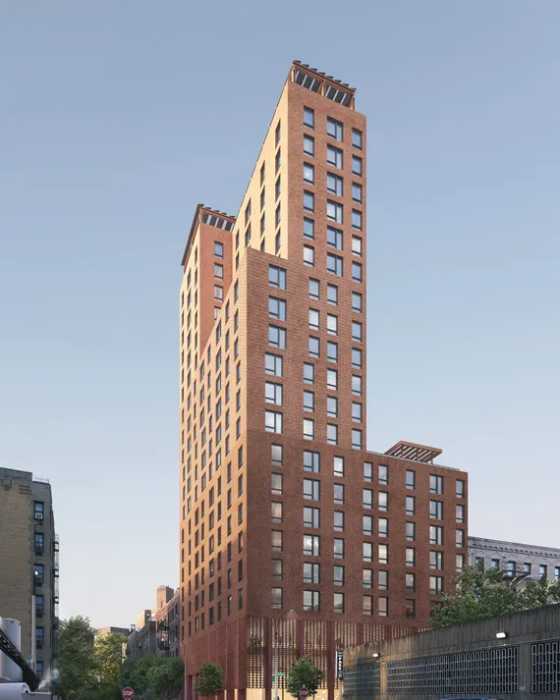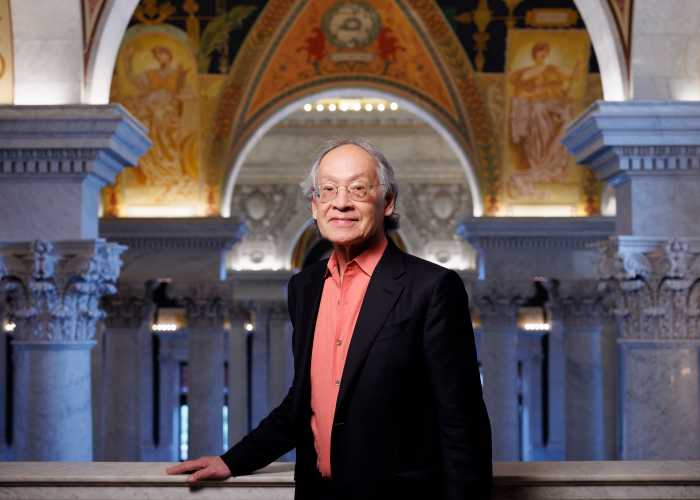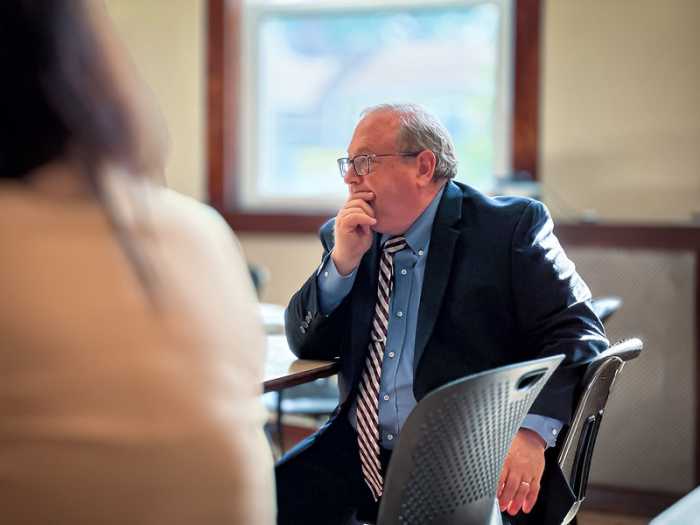By Josh Rogers
The scene has been fairly typical over the last year. The governor or mayor or both call a press conference to make a big announcement about development in Lower Manhattan or the Far West Side. It usually hinges on a transportation investment, but the person who often is not there for the ceremony is Assembly Speaker Sheldon Silver.
It is a curious omission particularly since Silver, Albany’s most powerful Democrat, represents Downtown and as Assembly speaker, he has effective veto power over all Metropolitan Transportation Authority capital projects. In an interview in his Downtown office Friday, Silver said unless the proposals are changed, he is prepared to block Pataki’s and Bloomberg’s plans to renovate the South Ferry subway station, to construct an extension of the 7-train to the West Side — and surprisingly enough, the speaker said he is even prepared to stop his
most beloved project, the Second Avenue subway, unless the M.T.A. commits to spending money Downtown at the beginning of construction.
Silver, one of the strongest advocates for the Second Ave. project, said it is fine if the M.T.A. proceeds with its plans to build the first four stops on the Upper East Side, but he will not allow money to go for that unless the state-controlled agency also commits construction money to the Downtown section of the line in the first phase.
“I will support segmentation if it’s dependent on a full build,” Silver said during the April 23 interview. He also spoke about plans to build a Downtown rail link from J.F.K. Airport and the Long Island Rail Road, concerns that Far West Side commercial plans will compete with the World Trade Center site redevelopment, and said his negotiations to extend the middle-class rent protections for Battery Park City residents in Gateway Plaza are going well.
Second Ave. subway
As for Second Ave., Silver said the danger of letting the M.T.A. just build stops at 92nd , 86th, 72nd and 63rd Sts. is that the agency could change plans and decide not to build stops in the Lower East Side, Chinatown, and the Financial District if officials don’t secure the rest of the money.
Peter Kalikow, M.T.A. chairperson, said the project’s phasing is dependent on federal transportation funding guidelines and he sounded like there was no flexibility in building first on the Upper East Side, then up to Harlem’s 125 St. in phase 2, from 55th to Houston Sts. in phase 3, and then to Grand St., Chatham Sq., the Seaport and Hanover Sq. in phase 4. “That’s the order it’s going to be built,” Kalikow said in response to a question from Downtown Express about altering the phasing.
Kalikow and Silver are both in favor of getting the full-build, 16-stop, local service built, so there may be room to negotiate between their current contradictory positions – build it one segment at a time or build a little Downtown as part of phase 1. Both never miss an opportunity to praise the line, which many observers say is needed to relieve overcrowding on the Lexington Ave. line and provide service to people living near the East River.
“We are closer now than we’ve ever been,” Kalikow said at the M.T.A.’s board meeting April 28, which approved proceeding with phase 1. “I think we’re actually on the cusp of something historic. It’s the biggest expansion of the system in 60 years.”
The M.T.A. has committed $1 billion for the first segment, but it will cost $3.8 billion to construct. Kalikow said he still hopes to begin construction at the end of this year and thinks the federal government will finance about 50 percent of the project. He said if there is a shortfall for the first section, the M.T.A. would look to make it up in its next five-year capital budget, which starts in 2005.
In total, it will take an estimated 16 years and $16.8 billion to build. Last fall, the Partnership for New York City, a business group, released a study suggesting the economic development benefits of building the line were not worth the costs since it would take 16 years to see the benefits. Although subway advocates including Silver disputed the report, the M.T.A. changed its plans this year and decided to open the line in pieces, starting in the most crowded part of the Lexington line, the Upper East Side, in order to get a quicker economic payoff by raising real estate values for property closer to Second Ave.
Silver said on Friday that the only advantage he sees in building the line in segments is it may make it easier to get the federal money from Congress and the Federal Transit Administration. He said he didn’t think there would be more economic benefits if part of the line opened sooner.
He led the fight to get the M.T.A. to agree to build the full line and put $1 billion in the budget a few years ago. Silver has one appointee to the M.T.A.’s Capital Review Board, Assemblymember Catherine Nolan, who he can direct to veto projects. The M.T.A. had been looking to build a Second Ave. line from 125th St. to 63rd St., which many politicians and transit advocates dubbed the “Stubway” and successfully fought against.
Airport link, South Ferry
Silver said he vetoed the M.T.A.’s South Ferry renovation plan for the second time a week ago. Two close allies of Silver, Madelyn Wils, chairperson of Community Board 1, and Carl Weisbrod, president of the Downtown Alliance, and their organizations oppose using the $450 million of Sept. 11 relief money to expand South Ferry and they have all raised concerns about how the project would disrupt Battery Park.
Silver said those were valid reasons to hold the project up, at least for now, and he is also troubled that the construction would affect the area where the temporary 9/11 memorial sculpture, “The Sphere” is located. Reportedly, the M.T.A. is working on ways to renovate the subway without having to move the W.T.C. sculpture that withstood the Sept. 11 attack.
Pat Kirshner, director of operations at the Battery Conservancy, said it was her understanding that the M.T.A. would find a way to protect “The Sphere” during construction, but the project would still mean that about 40 trees would be killed. She said the city Parks Dept. and the M.T.A. are negotiating the extent to which the M.T.A. would restore the park after construction.
Many Staten Island commuters favor the expansion to relieve congestion in the crowded station. The M.T.A. also says the expansion will enable trains to turn around quicker and speed up 1 and 9 routes, although the agency has not yet released a detailed time analysis and some Downtowners have questioned the authority’s initial time-savings estimates.
Silver said he is in favor of shifting South Ferry money to help pay for the J.F.K. Airport-L.I.R.R. link, a position also backed by the Alliance and C.B. 1.
He said the rail link “should be the priority of the state, the M.T.A. and the funds they can get from the federal government.”
Kalikow said earlier this year that he thought the M.T.A. would make an investment in the airport connection, which may use existing subway tunnels. Gov. George Pataki and Mayor Mike Bloomberg are expected to choose a rail link option and identify a way to pay for it within the next two weeks. Four options are under consideration with preliminary cost estimates ranging from $2 billion – $5 billion.
One funding source is from the 9/11-related federal Community Development Block Grant money controlled by the Lower Manhattan Development Corp. Silver sounded hesitant to use C.D.B.G. money for the rail link.
“Community development money should be used for the community,” he said. “We need this right now.”
He said with the growing residential population Downtown, the C.D.B.G. priorities are for schools, a library, park space particularly on the waterfronts, and for a recreation center run like the 92nd St. Y. “It’s now a family community,” he said.
Gateway Plaza
In recent weeks, Silver has been negotiating with the owners of Gateway Plaza, Lefrak Organization, to extend rent protections from June 2005 to June 2009. He was reluctant to go into specifics on the negotiations, but Silver was optimistic that a deal could be worked out soon.
Similar to his veto power at the M.T.A. , Silver used his power at the state’s Public Authority Control Board to convince the LeFrak family to agree to guidelines similar to rent stabilization so that the owners could refinance their debt. The Battery Park City Authority, which is regulated by the P.A.C.B., manages the financial arrangement with Lefrak Organization. Lefrak’s 10-year rent stabilization agreement was scheduled to expire in 2005. In 2003, Silver negotiated an extension obligating the LeFraks to agree to rent stabilization increases until 2009 in exchange for P.A.C.B. approval for a debt refinancing.
Recently, Samuel LeFrak, the family patriarch, died, tying up the agreement in estate matters. Silver said if the LeFraks go forward with refinancing, it is clear they will be obligated to extend the protections.
The 1,700-apartment middle class complex is the largest in B.P.C. Jeff Galloway, a member of the tenants’ executive board, said he spoke with Richard LeFrak recently and he also had the feeling an agreement was getting closer. “They are acting as if they will go forward with an extension for at least four years,” said Galloway.
He thinks Silver has been a key factor in brokering a deal. “He has been very helpful to us and very important to the process,” said Galloway.
Galloway said many long-term tenants pay about $2,800 a month for a two-bedroom apartment, but roughly half of the residents are new tenants who come in paying market rate. The new tenants also have protections for increases, but some of them pay close to $4,000.
Another tenant, Tom Goodkind, said many are paying close to market rate now, but if the protections are lifted next year, it could drive many people out of the neighborhood. “It’s not like it’s a bargain,” he said. “We just don’t want it raised to the point where people have to move. It’s not a handout.”
Josh@DowntownExpress.com
Reader Services
Read More: https://www.amny.com/news/where-its-all-happening/


































